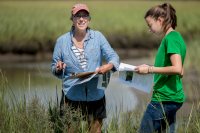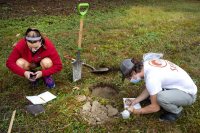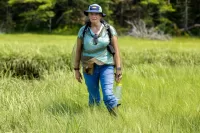
Five Bates students jumped out of a pair of Subarus at Sprague Marsh in the midcoast Maine town of Phippsburg on what promised to be a hot day in mid-July. Expecting to be swarmed by biting black flies and mosquitos, they came prepared.
In an instant they pulled on pants, shirts and hoods — all made from bug netting — and grabbed equipment. As her classmates recorded notes in yellow field journals, Fiona Wilson ‘25 of Barnstead, N.H., stood in the marsh and struck a pose, hands on hips, like the lead explorer on an expedition.
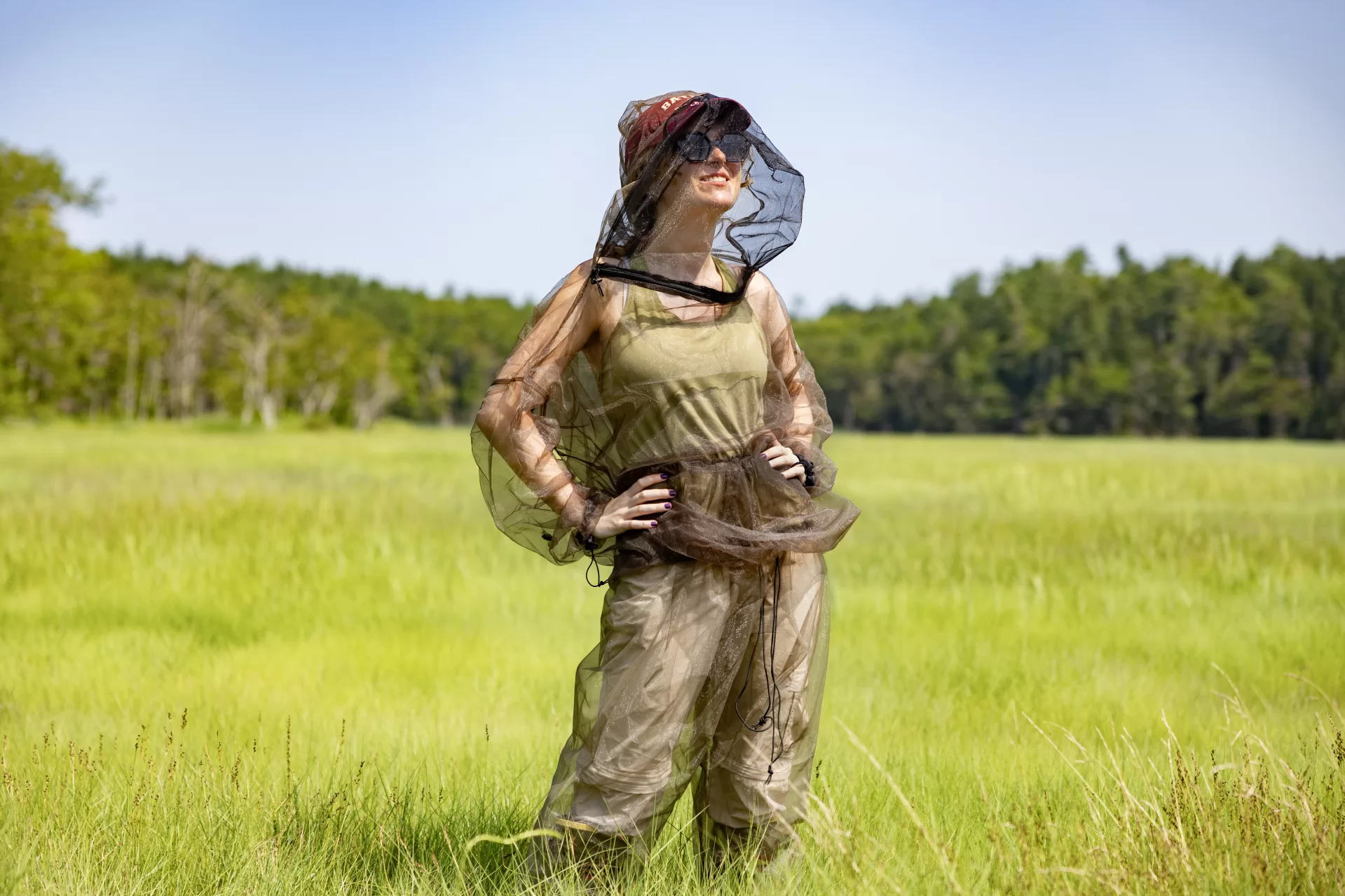
This summer, these intrepid students are working with Professor of Earth and Climate Sciences Beverly Johnson to gather sediment cores from four Maine salt marshes to help inform the U.S. Environmental Protection Agency’s ongoing study of blue carbon — carbon dioxide from the atmosphere that is sequestered in vegetated coastal areas, including salt marshes and seagrass meadows.
Related News: New EPA Report Showcases Bates Research
Released on Aug. 8, 2023, the Environmental Protection Agency’s first-ever regional assessment of blue carbon uses years of research by Bates Professor of Earth and Climate Sciences Beverly Johnson and Bates student researchers.
The students are among the first in the state to use a state-of-the-art greenhouse gas analyzer that will tell a more complete story of blue carbon “sinks” in Maine salt marshes. That, in turn, will provide further evidence to show whether marsh restoration could significantly help mitigate the effects of climate change by increasing carbon sequestration in salt marshes.
It’s work Johnson has done for the past decade to help scientists, stakeholders and policy makers, including the EPA, better understand the potential of blue carbon in the Northeast.
Blue carbon is an especially “hot topic now that seems to capture the imagination of the general public,” said Phil Colarusso, a biologist at the EPA’s Boston office. That’s because scientists only discovered recently that blue carbon sinks are far more efficient than forestland (called green carbon) at sequestering carbon from the atmosphere.
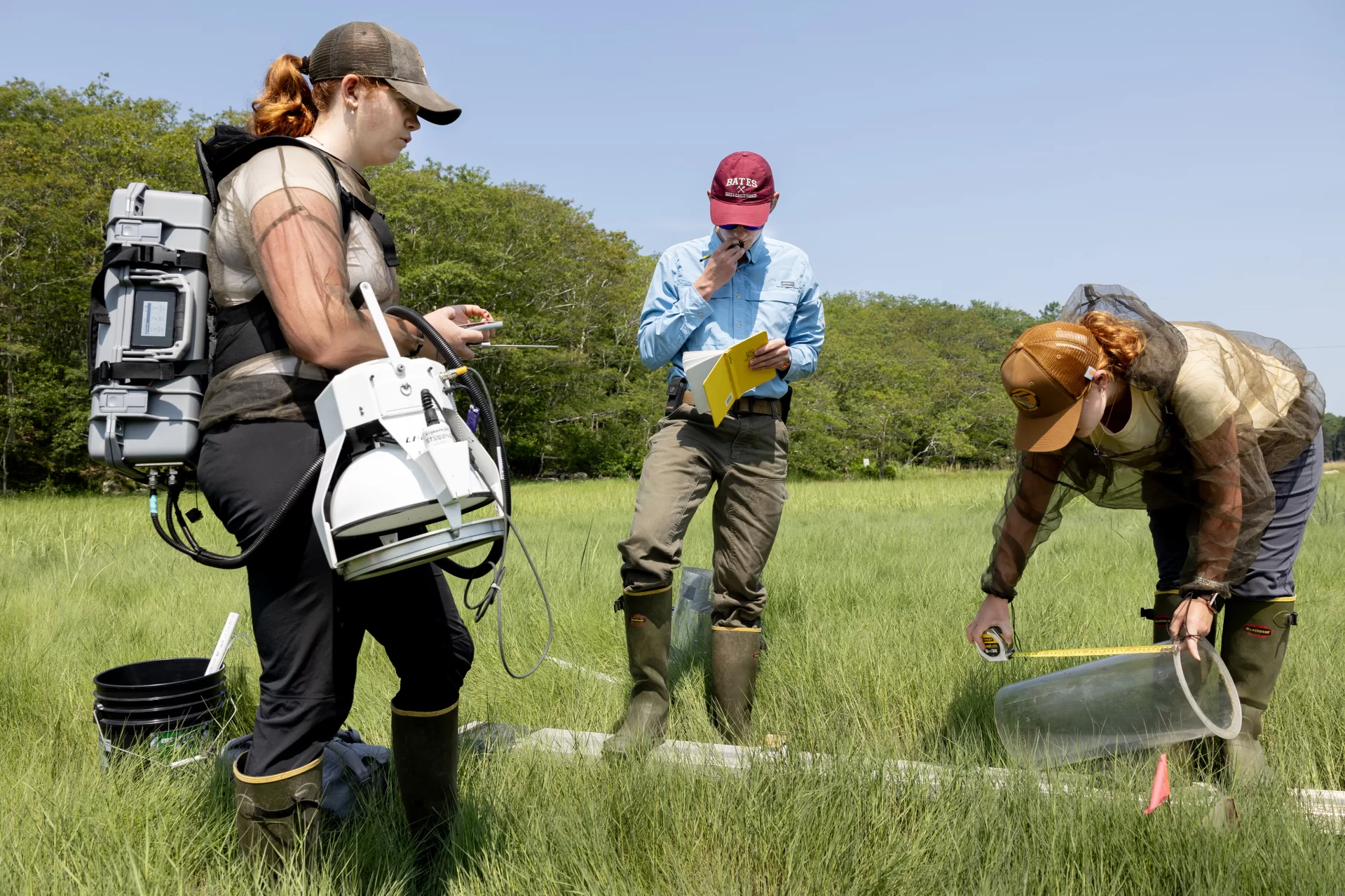
“If you compare the same area of forest to salt marshes and other blue carbon systems in terms of how much carbon is going into the ground, blue carbon systems are moving four to 10 times more carbon into the ground than forests. So they are very effective at photosynthesis and then sequestering and storing that carbon for a long period of time,” said Johnson, who is at the forefront of this research in Maine and one of the region’s top salt marsh experts.
Johnson is a founding member of the Maine Blue Carbon Network, which provides a forum to discuss Maine’s blue carbon resources, as well as a member of Gov. Janet Mills’ Maine Climate Council.
This summer, Johnson’s five Bates student researchers worked in marshes between Wells and Phippsburg looking at historic features that restrict carbon sequestration in salt marshes, like century-old dikes with roads built across them. They also looked at the amount of carbon being stored in the marshes in real time, using Bates’ powerful new greenhouse gas analyzing tool, the LI-COR device.
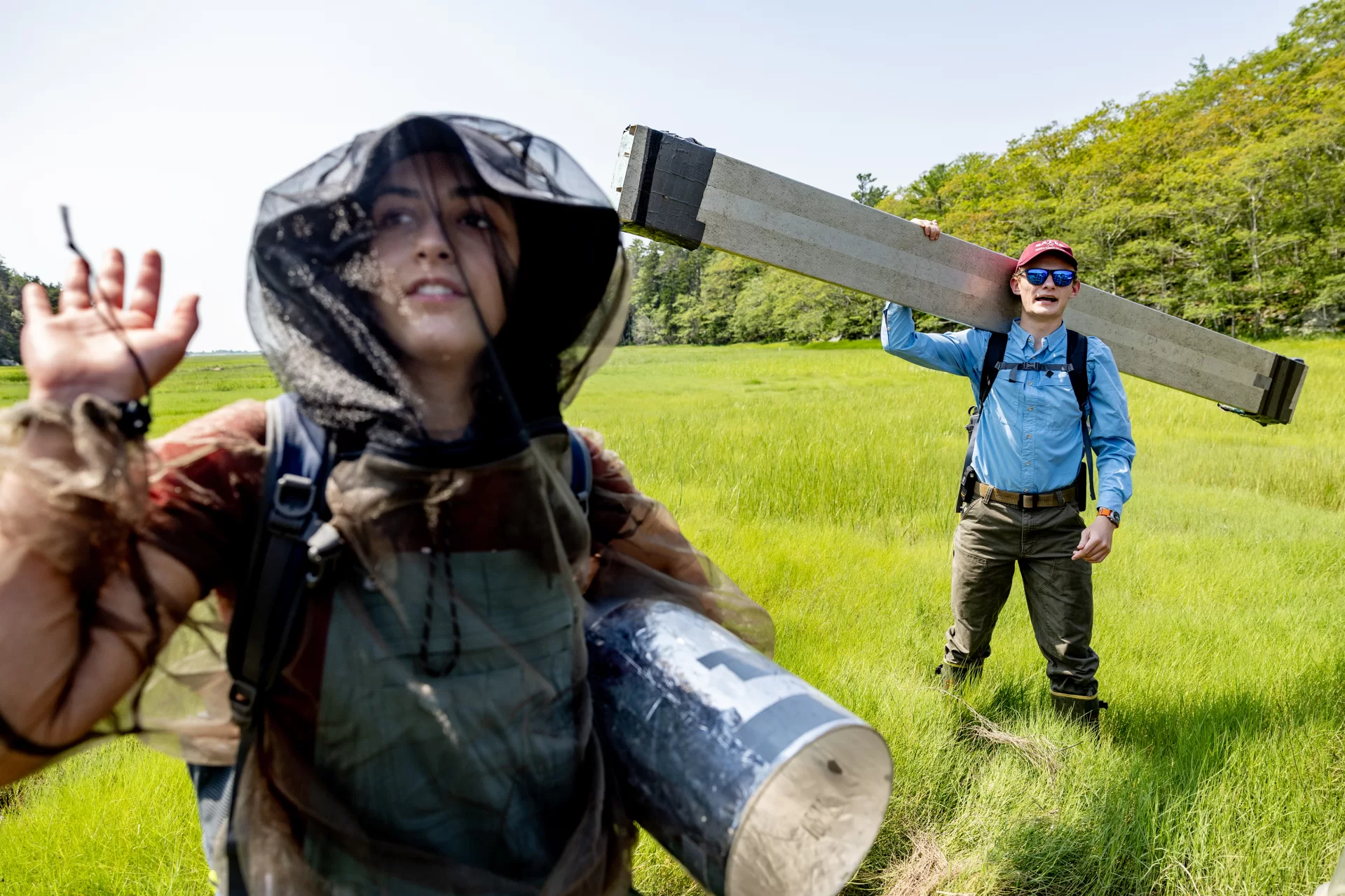
Specifically, the Bates team is looking at how unhealthy marshes, or those where the tides are restricted due to development, not only function less effectively as carbon sinks, but also produce methane, a greenhouse gas, in the rotting, decomposing areas of the restricted marshland.
“If we open up the tidal restrictions and get the tides back to where they need to be, you could conceivably reduce the amount of methane coming out of (restricted salt marshes). That’s the prevailing thinking,” Johnson said as she scanned Sprague Marsh.
Restoring coastal marshland in Maine also could allow more of it to serve as carbon sinks, she said. Other benefits of restoration include improving habitat for fish and birds, providing nutrients for nearshore fisheries, and offering protection from storm surges and coastal erosion.
This summer, Johnson’s research interns used her new portable greenhouse gas analyzing system to measure the fluctuation in greenhouse gasses in designated areas in the four marshes — both in areas where the marshes are restricted and where there are no restrictions. It’s work that used to take six hours to attain a single measurement back in her lab but now, thanks to the LI-COR device, takes minutes.
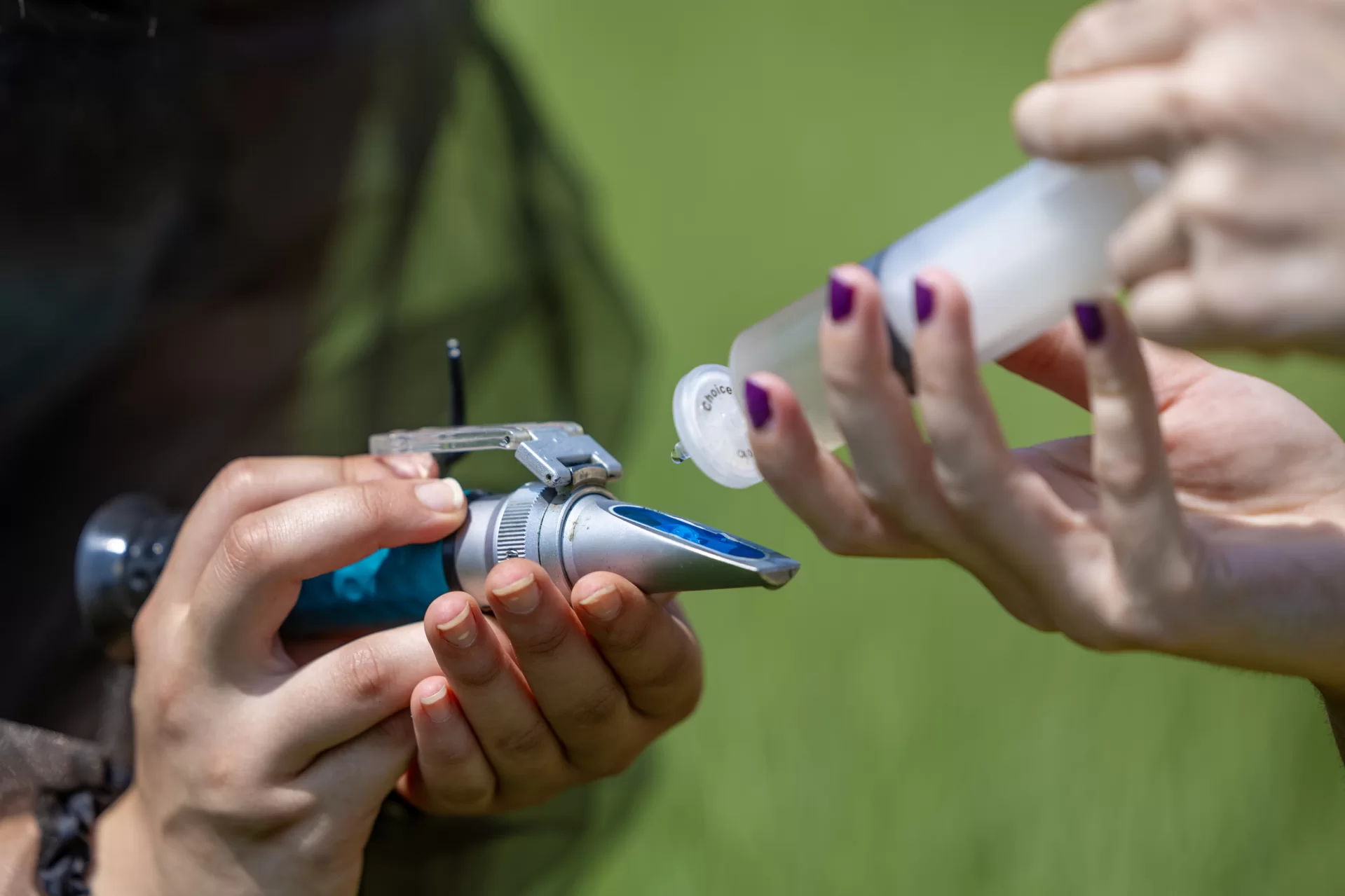
Johnson’s lab is among the first in Maine to use the state-of-the-art greenhouse gas analyzing system, producing this kind of blue-carbon data.
“With the LI-COR, you’re getting the CO2 and methane and greenhouse gas flux readings in real time. It is brand-new technology. We are the first to use it in Maine salt marshes. That is so exciting,” said Anna Sarrazin ‘24 of Berlin, Conn. “I feel at Bates we have a unique opportunity as undergrads to be a part of something that at larger institutions would be available only to graduate students.”
On that hot mid-July day at the Bates–Morse Mountain Conservation Area, Kate Dickson ‘24 of Princeton, Mass., hiked into the marsh with some of that technology on her back: a 40-pound case containing part of the LI-COR device which is operated from an app on her phone.
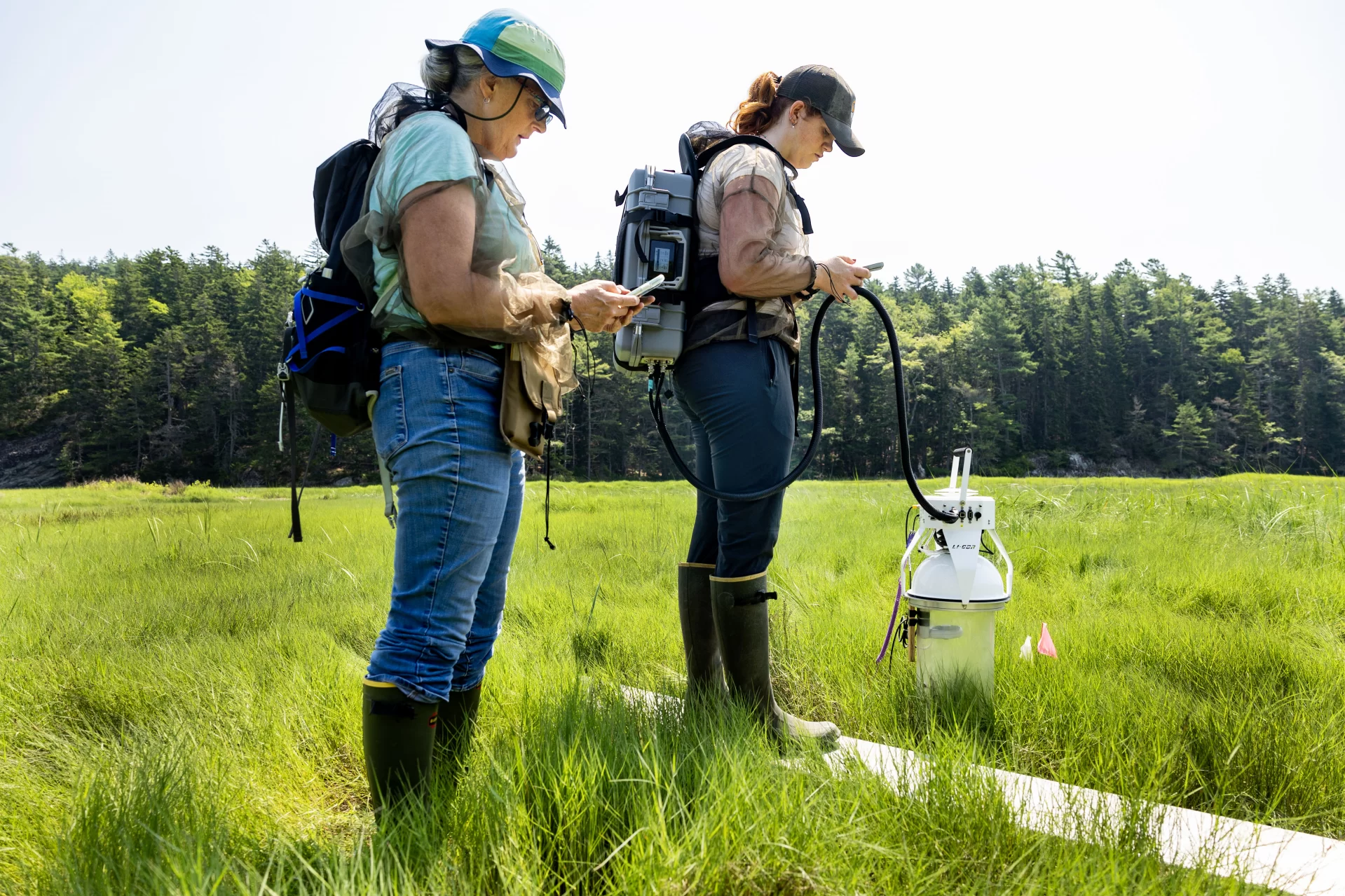
When Dickson reached the first flagged sample area, a cylinder 10 inches in diameter was placed in the marsh and the LI-COR device placed on top of it. Soon air was cycled through it and the device started reading the amount of carbon dioxide and methane in the cylinder. After a few minutes, the readings were used to determine the amount of greenhouse gasses either taken up by the plants or released from the soils into the atmosphere at that location.
The data, at first, was slow in coming. It was supposed to appear on Dickson’s cell phone, but a momentary technological hiccup prevented the data from loading. Together Dickson and Johnson worked to sync the apps on their phones with the LI-COR system on Dickson’s back. They worked as a team, literally with their heads together, as Johnson addressed the problem with aplomb.
Dickson sought a summer research position in Johnson’s lab to provide fodder for her senior thesis. But the All-American rower said learning about the threat posed by restricted marshland gave her summer work at Bates new meaning.
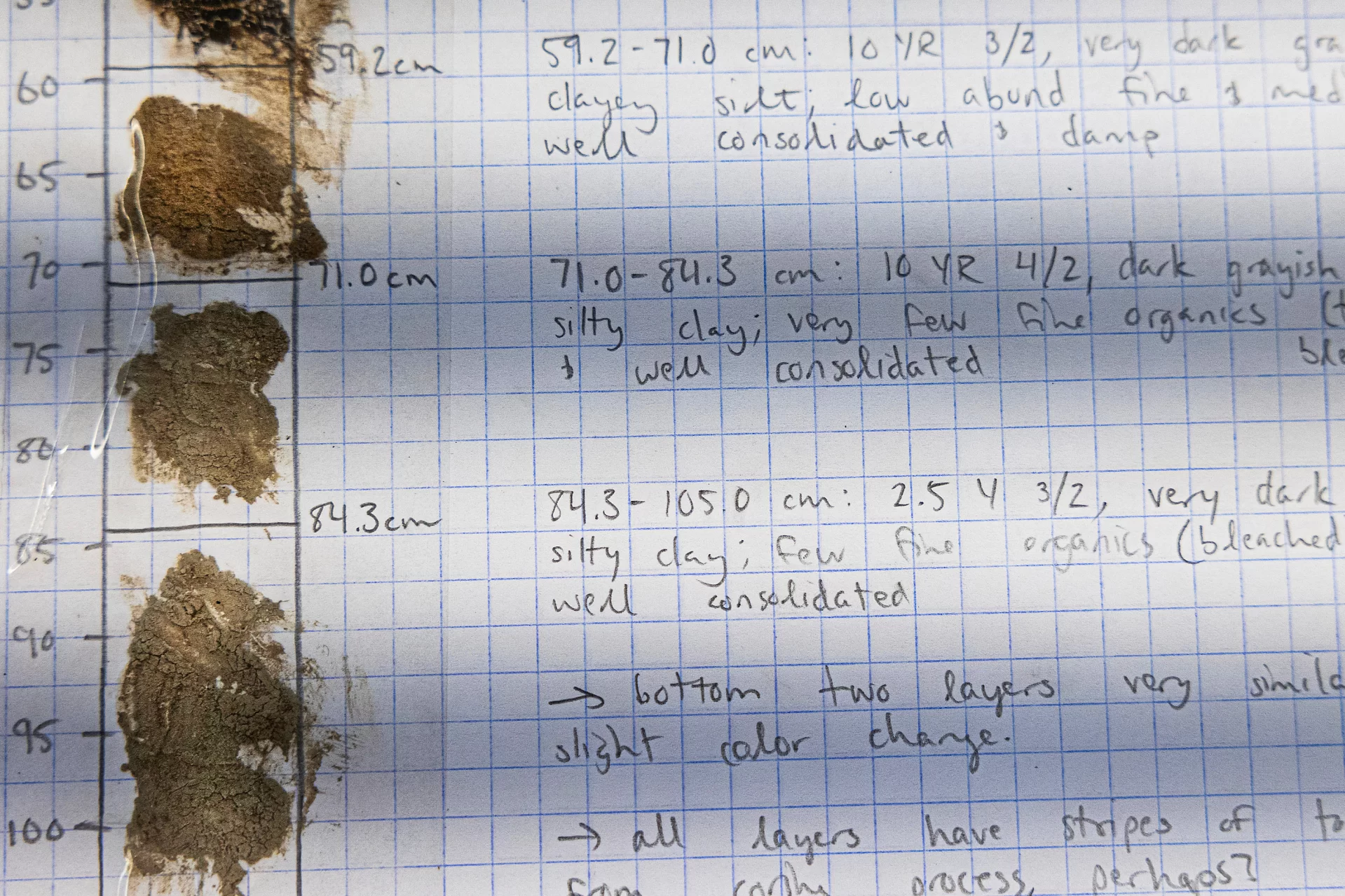
“Tidal restrictions and human involvement in marshes not only stops (the marsh) from being a carbon sink, but it actually releases a ton of methane, which is a greenhouse gas that is about 25 times worse than carbon dioxide. So unhealthy marshes are a double-edged sword,” Dickson said. “It’s a real privilege to be out there walking around in the marsh and doing some good work.”
Right back at you, Johnson indicated, with a nod to her student. “This is the most productive summer I have ever had with students. It is one of my best teams,” she said.
The students started that day with Johnson taking these readings in the healthier part of the marsh, on the side closest to the ocean. In the afternoon, they took readings on the inland side of the marsh, where an 80-year-old gravel road built during World War II restricted the tides.
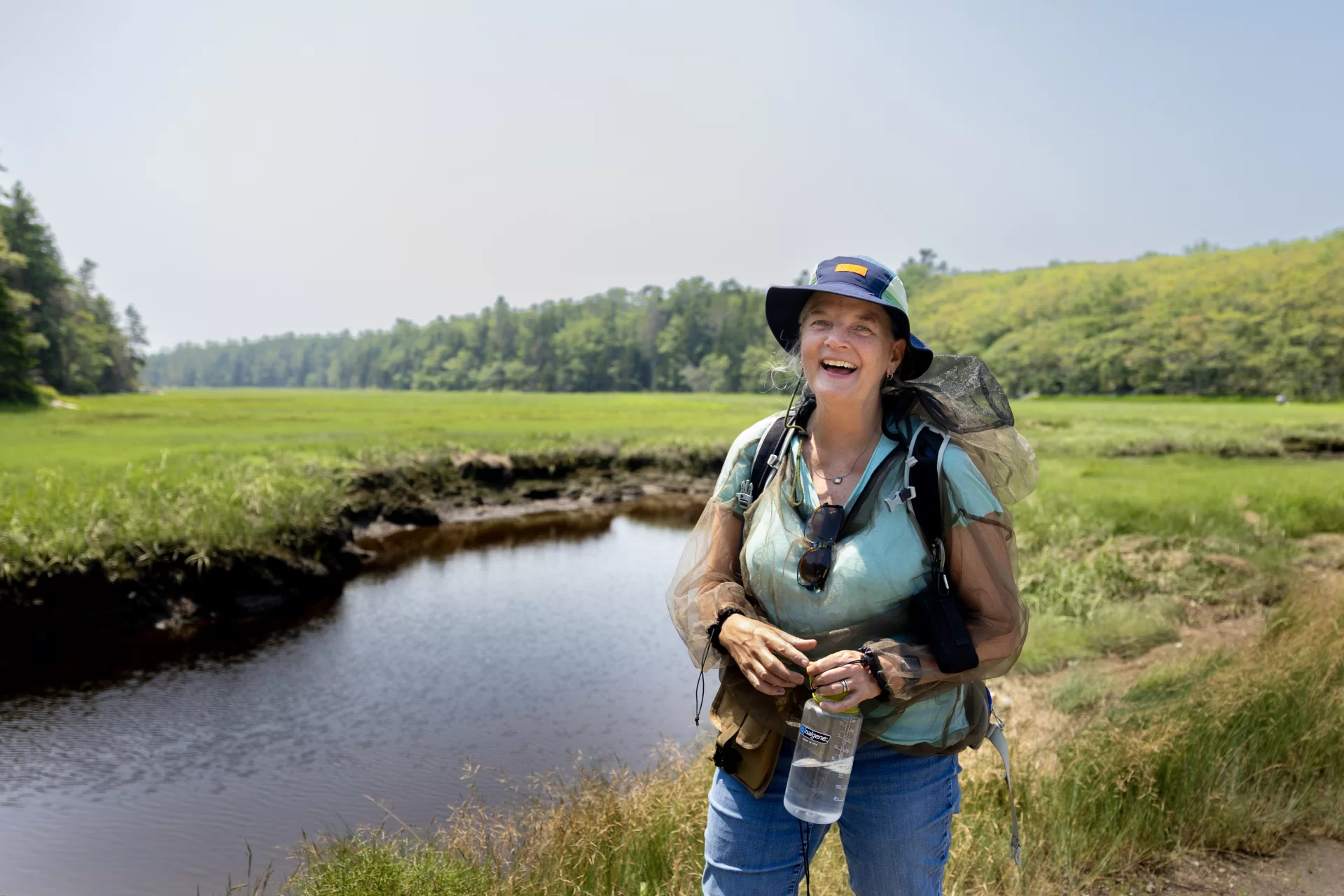
As she knelt in the Sprague Marsh in mid-July collecting water samples, Sarrazin was all-in on helping Johnson pursue different lines of inquiry into blue carbon sinks. When told that the data she gathered might contribute to a future EPA blue-carbon report, the rising senior was delighted, but not surprised.
“I think this work is really groundbreaking and I’m really excited to turn that into a senior thesis that is going to have meaning outside of an undergraduate thesis at Bates,” said Sarrazin. “It’s extremely relevant.”
The student research team was funded by grants totalling around $330,000 from the Maine Sea Grant and Maine Community Foundation, as well as from smaller grants from the Maine Climate Science Information Exchange and Maine Coast Heritage Trust.
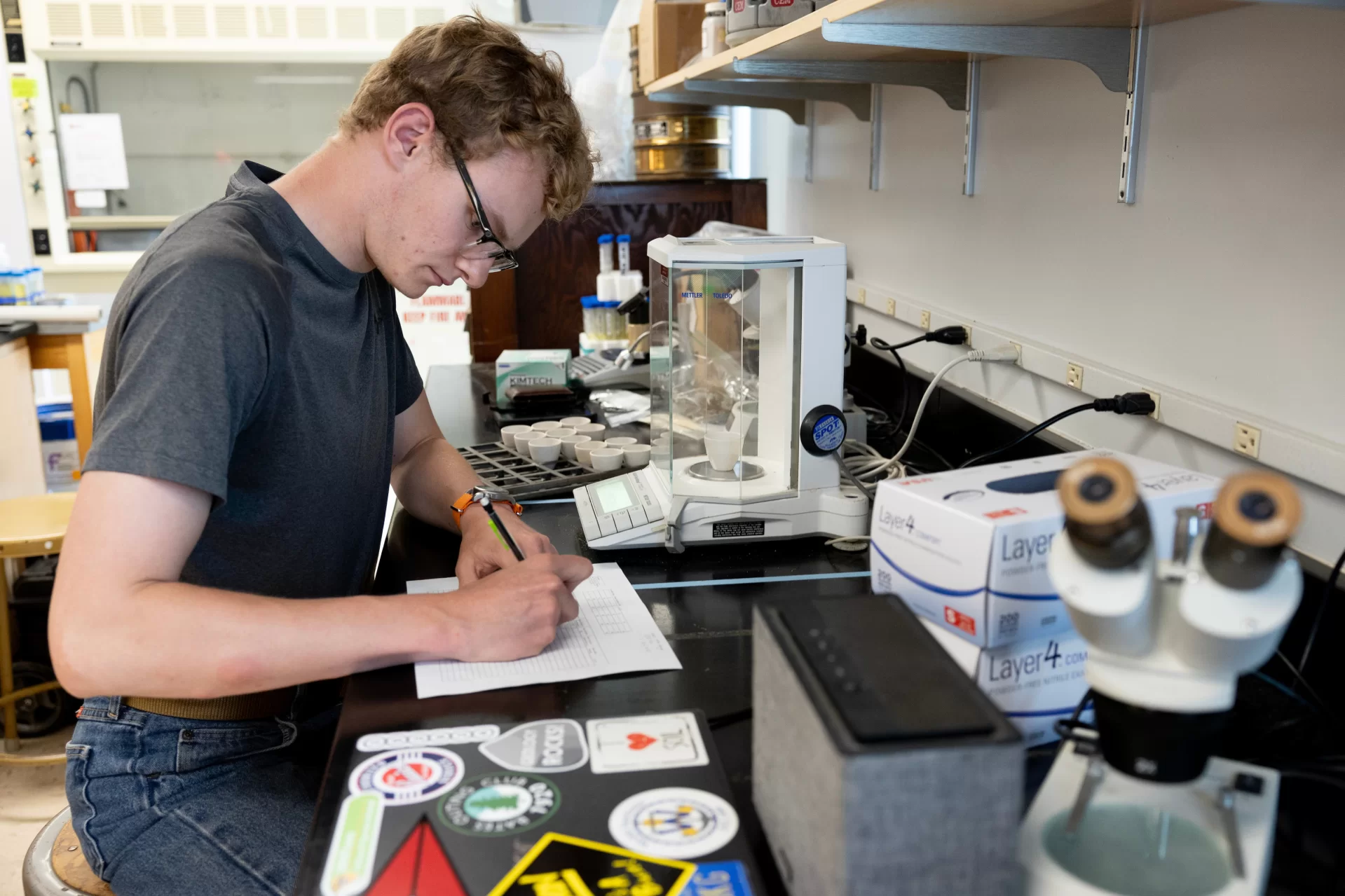
Johnson said time is of the essence when it comes to restoring and preserving Maine salt marshes that serve as blue carbon sinks because of the threat of sea-level rise. While salt marshes can adapt to smaller increments of sea level rise, too much too quickly can literally drown them.
“The predictions for sea level rise due to continued warming over the next 20 years will result in the loss of salt marshes unless something is done,” Johnson said. “Enhancing blue carbon habitats and employing other natural climate solutions, while decreasing our dependence on carbon-based fuels, will slow the warming of our planet and reduce the amount of sea level rise. But time is short and we need to act now.”
This article was prepared by Bates College using Federal funds under award NA22OAR4170121 from the University of Maine System/Maine SeaGrant, U.S. Department of Commerce. The statements, findings, conclusions, and recommendations are those of the author(s) and do not necessarily reflect the views of the University of Maine System/Maine SeaGrant or the U.S. Department of Commerce.
